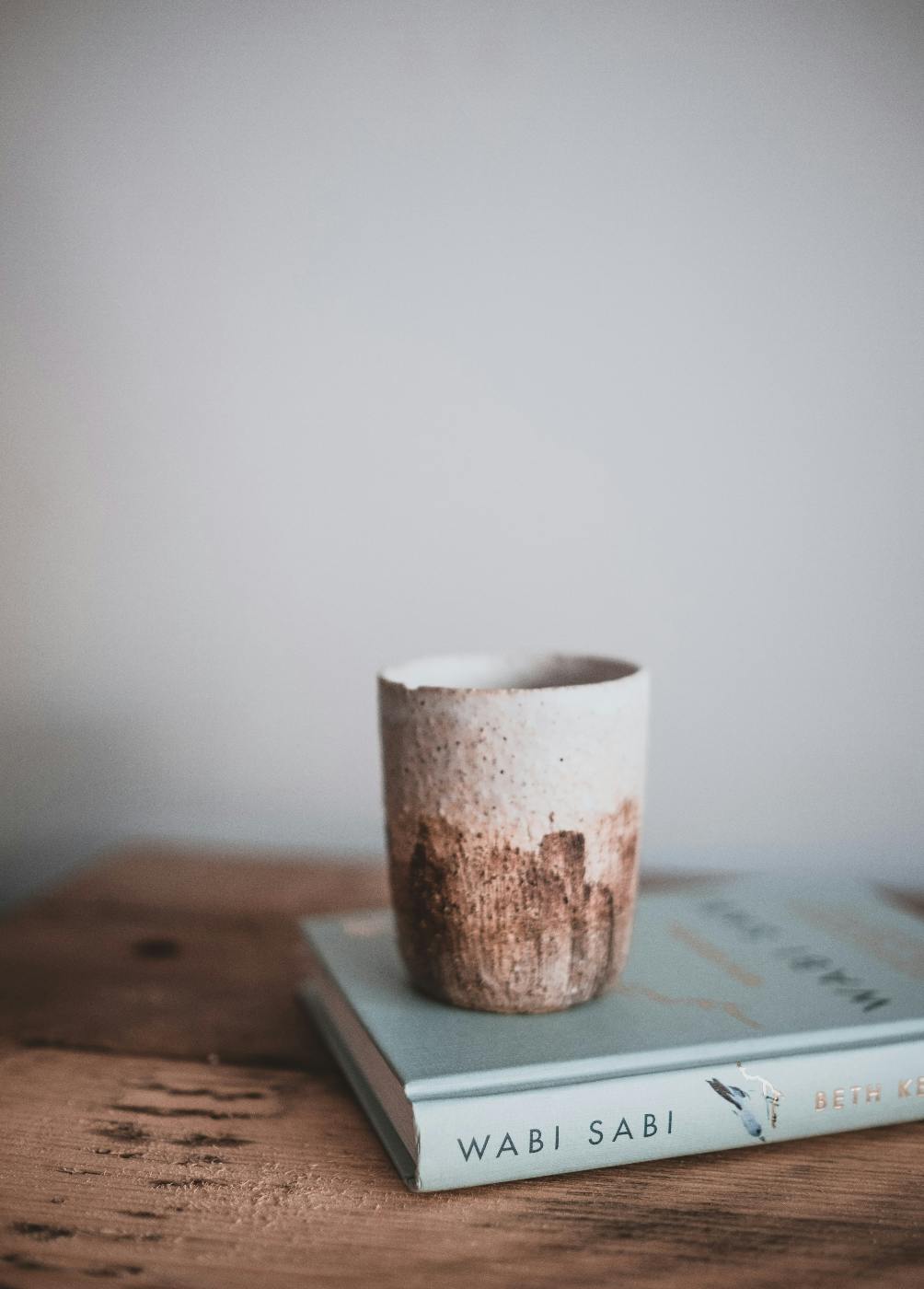
Wabi-Sabi is a traditional Japanese aesthetic philosophy that embraces the transient, imperfect, and incomplete nature of all things.
In a world obsessed with perfection and the relentless pursuit of flawlessness, there lies a profound wisdom that celebrates the beauty of imperfection – the art of Wabi-Sabi. Wabi-Sabi is a traditional Japanese aesthetic philosophy that embraces the transient, imperfect, and incomplete nature of all things. It is a worldview, a way of life, and an art form that urges us to find beauty in the simplest and most humble of objects and experiences.
Roots
The roots of Wabi-Sabi can be traced back to ancient Japanese tea ceremonies during the 15th century. The tea masters sought to cultivate a sense of mindfulness and appreciation for the humble and rustic. The philosophy quickly spread from tea ceremonies to other aspects of Japanese culture, including architecture, poetry, and visual arts.
At its core, Wabi-Sabi is about finding beauty in imperfection, impermanence, and incompleteness. It acknowledges the transient nature of existence and the acceptance of the inevitable cycle of growth and decay. In Wabi-Sabi, nothing is permanent, and everything is in a state of constant flux, and that is where the true beauty lies.
Key Aspect
One of the key aspects of Wabi-Sabi is the appreciation of natural materials and processes. Handcrafted pottery with its unique irregularities and asymmetry, weathered wooden furniture that bears the marks of time, or a garden that embraces the wildness of nature – all exemplify the essence of Wabi-Sabi. This appreciation of the natural world encourages a deep connection with our environment, fostering a sense of harmony and serenity.
Central to Wabi-Sabi is the idea of "ma," which translates to space or emptiness. Ma represents the interval between objects or events and the open spaces that allow for breath and contemplation. This concept reminds us of the significance of pauses, silence, and the unsaid – all crucial elements in the art of Wabi-Sabi. In our fast-paced modern lives, where every moment is filled with noise and clutter, embracing ma can provide a sense of calm and balance.
Moreover, Wabi-Sabi invites us to see beauty in the patina of age, the cracks in a vase, or the fading colors of a painting. It is the appreciation of the passage of time and the stories that objects carry with them. In this way, Wabi-Sabi contrasts sharply with the prevailing Western notion of beauty, which often revolves around the pristine, new, and flawless.

The Art
The art of Wabi-Sabi can profoundly impact our perspective on life. It encourages us to let go of the relentless pursuit of perfection and instead find joy in the unique and imperfect aspects of our existence. In a world that promotes unrealistic standards and constant comparison, Wabi-Sabi offers solace and a sanctuary to cherish what is genuine and authentic.
Be Present
Wabi-Sabi also extends its influence into the realm of mindfulness and living in the present moment. By embracing imperfections and accepting the transient nature of all things, we learn to release our attachment to outcomes and embrace the beauty of each passing moment. This mindful awareness can lead to a deeper appreciation of life's intricacies and a heightened sense of gratitude.
Architecture
In architecture, Wabi-Sabi encourages a harmonious blend of nature and man-made elements. Traditional Japanese houses often exemplify this concept with their simple, unpretentious designs that integrate seamlessly with their surroundings. Such architecture emphasizes the connection between indoors and outdoors, promoting a sense of oneness with nature.
The Arts
In the arts, Wabi-Sabi is reflected in minimalist brushwork, irregular patterns, and the use of natural materials. Haiku, the concise form of Japanese poetry, captures the fleeting beauty of nature and moments of life with its simple verses. Ikebana, the Japanese art of flower arrangement, exemplifies Wabi-Sabi by celebrating the natural shapes and imperfections of flowers and plants.
Philosophical
Beyond the artistic and material realm, Wabi-Sabi has profound philosophical implications. It reminds us of the impermanence of life and the inevitability of change. By accepting and embracing imperfection, we can find peace amidst chaos and appreciate the unique beauty that emerges from life's constant evolution.
Wabi-Sabi is not a set of rigid rules or guidelines but rather a mindset and an approach to life. It encourages us to slow down, observe, and appreciate the world around us. In doing so, we learn to see beauty in unexpected places and discover a new level of contentment and acceptance.
Recap
Wabi-Sabi, the traditional Japanese aesthetic philosophy, celebrates the beauty of imperfection and impermanence. It originated from tea ceremonies during the 15th century and has since spread to various aspects of Japanese culture, including art, architecture, and poetry. At its core, Wabi-Sabi emphasizes finding beauty in natural materials, embracing the passage of time, and appreciating the concept of "ma" – the space between objects. This philosophy encourages a mindful and present-focused approach to life, fostering a deeper connection with nature and a sense of acceptance for the transient nature of all things. By celebrating the imperfect and authentic, Wabi-Sabi offers a counterbalance to the modern world's pursuit of perfection and invites us to find joy in the simplest and most humble aspects of existence.
Conclusion
The art of Wabi-Sabi is a profound and poetic philosophy that reminds us of the beauty that lies in imperfection. It teaches us to find joy in the simple, authentic, and transient aspects of life. In a world that often values perfection and uniformity, Wabi-Sabi offers a refreshing perspective that celebrates the unique and imperfect nature of all things. By embracing Wabi-Sabi, we can cultivate a deeper connection with ourselves, others, and the world around us, leading to a more mindful, compassionate, and meaningful existence.

